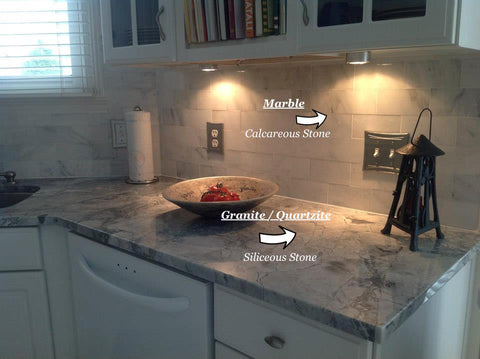Knowing Your Stone: Siliceous vs Calcareous

Siliceous and Calcareous Stones
Avoid causing damage to popular natural stones such as marble, travertine and limestone by understanding key differences between a siliceous and calcareous stone.
Siliceous Stone
Common types of siliceous stone include: granite, slate, sandstone, quartzite, brownstone, and bluestone. A siliceous stone is composed mainly of silica or quartz-like particles, and are considered durable and easy to clean.
For siliceous stones, messes such as hard water stains and mineral deposits are easier to clean, since it is safe to use "mild" acidic cleaning solutions.
Calcareous Stone
Marble, travertine, limestone, and onyx are all common types of calcareous stones and are composed mainly of calcium carbonate. To these stones, cleaning solutions with acidic or alkaline values should be avoided.
For calcareous stones, acidic cleaners and products such as vinegar and lemon juice should always be avoided. Additionally, formulas designed for removing calcium should be avoided.
Helpful Links For Stone Care and Maintenance:
- How to Safely Remove Hard Water Spots from Quartz Countertops
- Protect Calcareous stones with ioSeal
- How To Restore a Composite Granite Sink
- White Haze on Composite Granite Sinks
- Cleaning and Proper Care For Stone Showers: Marble, Travertine & More
- Tom Munro
Comments 0